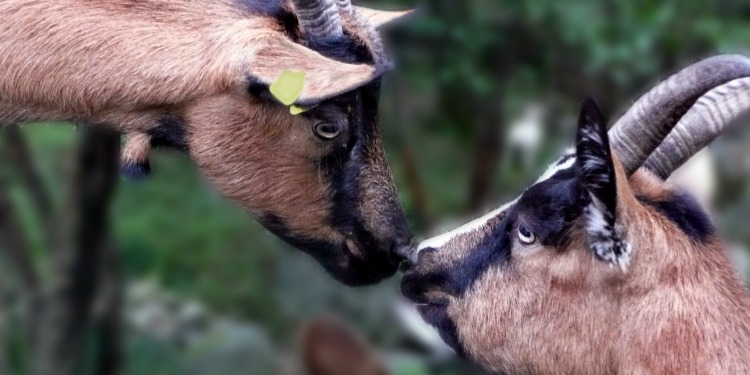The Yom Kippur Goats
The Fellowship | September 16, 2018

“Then he is to take the two goats and present them before the LORD at the entrance to the tent of meeting. He is to cast lots for the two goats — one lot for the LORD and the other for the scapegoat.” — Leviticus 16:7–8
Jews around the world are observing the most holy time on the Jewish calendar, the High Holy Days. Beginning with Rosh Hashanah, the Jewish New Year, and ending ten days later with Yom Kippur, the Day of Atonement, this season is marked by intense reflection and repentance. This is one of 18 devotions focused on this holy season, exploring its meaning and the many lessons we can learn from this biblically mandated observance. To learn more, download our free study on Jonah, which is traditionally read during Yom Kippur.
Yom Kippur is a shadow of what it once was. Today, the holiday is marked with a day of fasting and worship in the synagogue. However, when the Temple stood, the people observed an elaborate service, culminating when a red thread representing the sins of Israel would miraculously turn white when they were forgiven. The service was so uplifting that the Jewish sages describe Yom Kippur as one of the two most joyful days on the Jewish calendar.
The service that once took place in the Temple was based on the commandments regarding two goats. Today, we only read about that service; however, it is imperative that we understand the meaning behind this ritual. Once we do, we can still benefit from the message of the goats even in their absence.
The Bible instructed the High Priest to select two goats and then cast lots to determine each one’s fate. By way of the lots, God would determine which goat would be consecrated to Him and which would become the scapegoat sent into the desert to die. The commandment required that the two goats be identical in appearance, size, and value. These goats would look like twins – the same on the outside – but their destinies would be completely different.
The idea of twins that are opposite in nature is familiar in the Bible. Although twins, Jacob and Esau could not be more different. Ultimately, as adults, they took very different paths in life, and Jacob became the father of God’s people while Esau became the father of Amalek – the nation designated by the Bible as God’s archenemy. The twin goats on Yom Kippur are meant to remind us of Esau and Jacob.
The message of the two goats is that while their appearance may fool men, there is no fooling God. He only determines their appropriate fate. “People look at the outward appearance, but the LORD looks at the heart” (1 Samuel 16:7). On Yom Kippur, we have an incredible opportunity for forgiveness. But in order for that to happen, we must admit our errors and resolve to be better. We can only do that if we are willing to uncover our greatest shortcomings and confront our hidden vices. We can fool others and even ourselves, but there is no deceiving God.
Yom Kippur is a time to come clean. We need to take an honest look inside the places that only we can see. We have to determine where we have gone wrong and make amends. Only then can God cleanse us of our sins.
